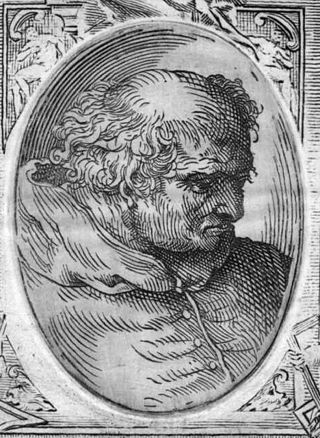
Donato Bramante, born as Donato di Pascuccio d'Antonio and also known as Bramante Lazzari, was an Italian architect and painter. He introduced Renaissance architecture to Milan and the High Renaissance style to Rome, where his plan for St. Peter's Basilica formed the basis of the design executed by Michelangelo. His Tempietto marked the beginning of the High Renaissance in Rome (1502) when Pope Julius II appointed him to build a sanctuary over the spot where Peter was martyred.
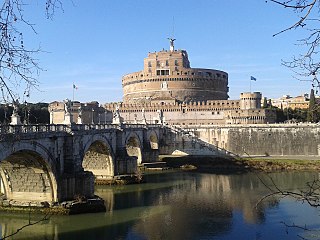
The Mausoleum of Hadrian, also known as Castel Sant'Angelo, is a towering rotunda in Parco Adriano, Rome, Italy. It was initially commissioned by the Roman Emperor Hadrian as a mausoleum for himself and his family. The popes later used the building as a fortress and castle, and it is now a museum. The structure was once the tallest building in Rome.
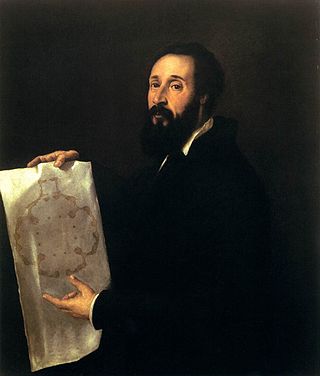
Giulio Pippi, known as Giulio Romano, was an Italian painter and architect. He was a pupil of Raphael, and his stylistic deviations from High Renaissance classicism help define the sixteenth-century style known as Mannerism. Giulio's drawings have long been treasured by collectors; contemporary prints of them engraved by Marcantonio Raimondi were a significant contribution to the spread of sixteenth-century Italian style throughout Europe.

GiacomoBarozzida Vignola, often simply called Vignola, was one of the great Italian architects of 16th century Mannerism. His two great masterpieces are the Villa Farnese at Caprarola and the Jesuits' Church of the Gesù in Rome. The three architects who spread the Italian Renaissance style throughout Western Europe are Vignola, Serlio and Palladio. He is often considered the most important architect in Rome in the Mannerist era.

Pellegrino Tibaldi, also known as Pellegrino di Tibaldo de Pellegrini, was an Italian mannerist architect, sculptor, and mural painter.

Prospero Fontana (1512–1597) was a Bolognese painter of late Renaissance and Mannerist art. He is perhaps best known for his frescoes and architectural detailing. The speed in which he completed paintings earned him commissions where he worked with other prominent artists of the period. He was a prominent figure in the city of Bologna, serving as official arbitrator in the business disputes of local artists. In his later career Fontana trained younger painters, including his own daughter Lavinia.

Livio Agresti (1508–1580), also called Ritius or Ricciutello, was an Italian painter of the late Renaissance or Mannerist period, active both in his native city of Forlì and in Rome, where he died. He was one of the members of the "Forlì painting school".

Borgo is the 14th rione of Rome, Italy. It is identified by the initials R. XIV and is included within Municipio I.
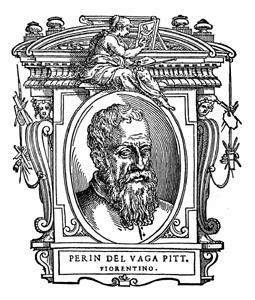
Piero Bonaccorsi, known as Perinodel Vaga, was an Italian painter and draughtsman of the Late Renaissance/Mannerism.
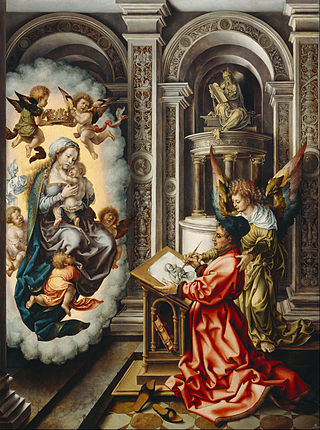
Romanism is a term used by art historians to refer to painters from the Low Countries who had travelled in the 16th century to Rome. In Rome they had absorbed the influence of leading Italian artists of the period such as Michelangelo and Raphael and his pupils. Upon their return home, these Northern artists created a Renaissance style, which assimilated Italian formal language. The style continued its influence until the early 17th century when it was swept aside by the Baroque.

Guglielmo della Porta was an Italian architect and sculptor of the late Renaissance or Mannerist period.

Girolamo Siciolante da Sermoneta began his career as an Italian Mannerist painter but later adopted the reformist naturalism of Girolamo Muziano in the 1560s and 70s. He was active in Rome in the mid 16th century.

Giovanni Filippo Criscuolo was an Italian painter, active during the late-Renaissance period, mainly in Naples.
Agostino Apollonio was an Italian painter of the Renaissance. He was born in Sant'Angelo in Vado, and painted around mid-1530s. He assisted his uncle Luzio Dolci. He lived in Castel Durante.
Events from the year 1547 in art.
Events from the year 1501 in art.
Raffaello da Montelupo, born Raffaele Sinibaldi, was a sculptor and architect of the Italian Renaissance, and an apprentice of Michelangelo. He was the son of another Italian sculptor, Baccio da Montelupo. Both father and son are profiled in Vasari's Le Vite delle più eccellenti pittori, scultori, ed architettori.

The Lives of the Most Excellent Painters, Sculptors, and Architects, often simply known as The Lives, is a series of artist biographies written by 16th-century Italian painter and architect Giorgio Vasari, which is considered "perhaps the most famous, and even today the most-read work of the older literature of art", "some of the Italian Renaissance's most influential writing on art", and "the first important book on art history".

Ottavio Semini was an Italian painter of the late-Renaissance.
Jacopo Siculo, also known as Giacomo Santoro da Giuliana (1490-1544) was an Italian painter of the Renaissance, mainly active in Umbria.


















